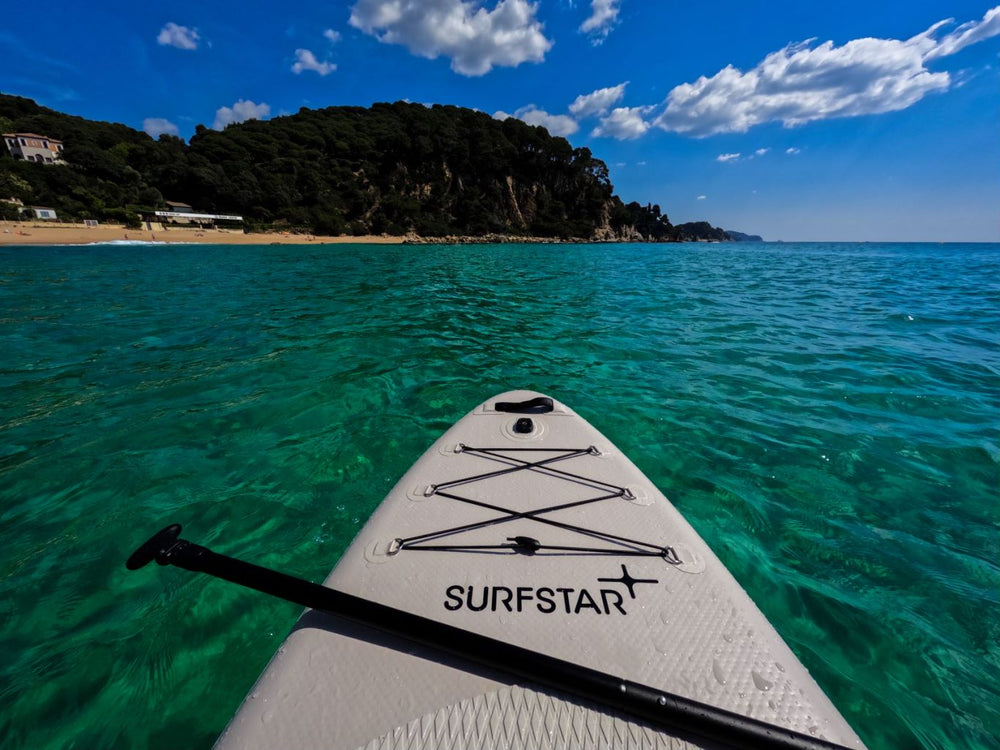How To Train For SUP In The Pool
There are many ways to train for stand up paddleboarding. One of the best ways that you can train for the sport without venturing into the open water just yet is to start in a pool. Many experts highly recommend starting your training in a pool, because it creates a more contained environment where there is less room for injury — or even just an unpredictable situation.
The truth is, no matter how skilled you are, paddling in the open water means that you aren’t always in control of the situation. There are countless ways that you can be caught in situations that you could never have predicted, and sometimes these can become dangerous — especially if you aren’t confident on your board just yet. Getting the basics down before you paddle out into an open body of water will keep you safe.
So, here are some of the ways you can train for stand-up paddleboarding in a pool
First, start outside of water completely.
This might seem counterintuitive, but your first step toward becoming a pro paddler is to train on solid ground. Plan to start working out about 6 to 8 weeks before you take your board out on the water. Your workouts should consist of both weight training and cardio. These workouts are meant to help you with strength, balance, and endurance.
While SUP can be a very relaxing experience, it is still a sport. It can be quite taxing on your body, so you want to make sure that you’re prepared. Some of the exercises that you should practice are:
- Skater lunges
- Single-leg deadlifts
- Chops
- Rows
- Squats with both legs and single leg
- Side planks (with leg raises, if possible)
As you build up your strength and stamina, start to add a small amount of weight to each of these exercises. Once you’ve spent a few weeks working up your strength, it’s time to hit the water.
Get your equipment in check and practice your mount first.
Paddling is a difficult exercise — especially if you aren’t used to it. Don’t be afraid to start slow. Once you put your board in the pool, practice mounting. As you do so, it will also give you the opportunity to make sure that you are using your equipment correctly. This is not a step that should be overlooked.
Once you’re certain you’ve connected to your leash correctly, practice mounting your board. Start by sitting on the board, and get used to balancing that way. Make sure that you begin by standing next to your board in the pool. Remember, when you bring your board out into the water, you will not have any ladders or steps to help pull you up.
Practice your balance as you pull yourself onto the board and straddle it. Sit stationary for a bit, and then practice paddling just a bit. Keep yourself steady the entire time before moving on.
Try standing up
Now, this is the tricky part. You want to move from sitting on your board to standing. The reason that this is such an important step is because transferring your weight can sometimes prove difficult, even in the calmest waters. Start by transitioning from straddling your board to kneeling atop it. Do this a few times, until you’re able to do so while keeping yourself steady.
Then, try raising yourself to a standing position. Go slow. Keep yourself as still as possible. Practice standing and then going back to a sitting position several times. Continue this until you are confident in your ability to balance.
Practice your balance while standing
Balance while standing and sitting are two totally different beasts. Once you have mastered the art of going from a sitting position to standing, you want to make sure that you can stand on the board for longer periods of time. After all, the sport is called stand up paddleboarding. This means that your ability to balance — and adjust for any water disturbance — is paramount.
So, the next step is to just simply stand on the board. There’s really no time limit to how long you should practice this step. Basically, keep going until you feel confident that you are well balanced. Then, before you begin paddling, you might want to introduce some sort of disturbance. Whether a friend is in the pool making a few small waves, or you devise another plan for shaking things up, this can help you figure out how to actively redistribute your weight when there is unexpected movement.
Time to paddle!
Finally, it’s time to paddle! Depending on the size of the pool, you may not have much room. But, that doesn’t mean you cannot practice paddling. Whether you can get in two strokes or several, you should definitely get some reps in using your paddle before you hit the open water. Try going from one end of the pool to the other, then do it again.
Once again, consider introducing some sort of disturbance to make sure that you’re prepared when the water isn’t at its calmest. Whether there’s a weather change or you get caught in the wake of a boat (or an animal), you want to make sure you can hold your own as best as possible.
Now, let’s try the open water
Once you’ve made it through all of these steps, it might be time to hit the open water! Remember to still start slow. Pick areas that are less frequently trafficked by boats and other vehicles, so that the waters are more likely to remain calm. Don’t be discouraged if it feels different than the pool feels. It certainly is!
In time, you will be a pro. And, no matter how much of an expert you become at SUP, the pool can always be a resource for practicing the basics or training yourself in more complicated or complex techniques.





Leave a comment